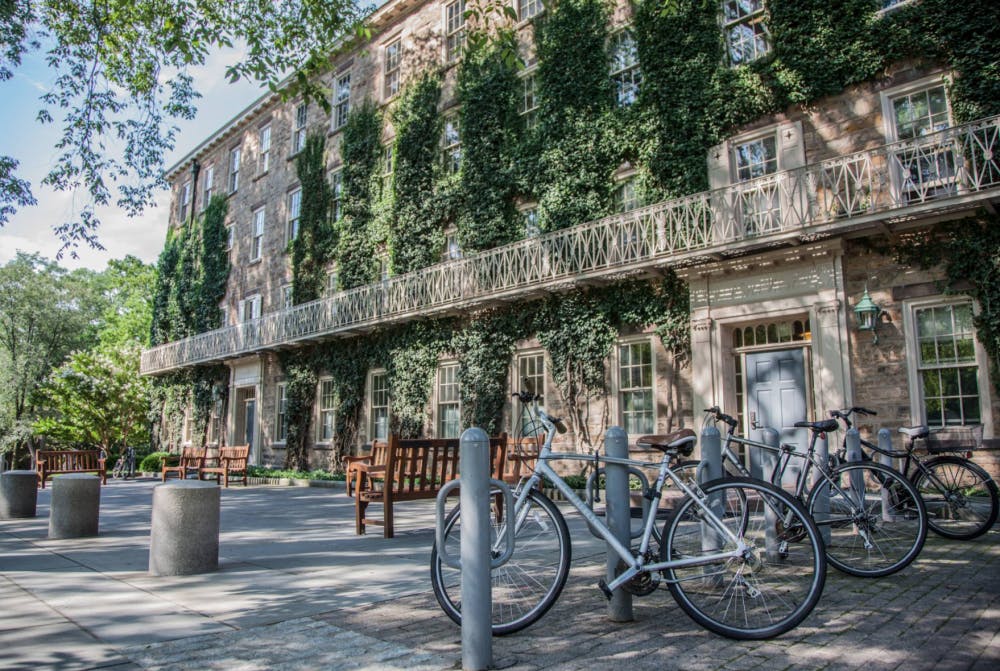My investigation into Princeton’s financial aid records revealed that the University has endowed scholarships reserved for students coming from the country’s richest towns and most expensive high schools. During the past three months, I reviewed a hundred pages of endowment listings on the “Giving to Princeton” directory and paired it with public information.
Sixty percent of Princeton students are on financial aid, and families with incomes exceeding $250,000 per year can qualify for it depending upon their situation. In total, more than 1,000 individual scholarship endowments provide revenue for the financial aid scheme. Donors often stipulate preferences for their scholarships’ recipients. For example, alumni or their friends may create scholarships to give educational funding to graduates of the high schools they attended.
The Pingry School Scholarship (est. 1936) goes to alumni of its namesake school, where yearly tuition costs costs $40,981. The Lawrenceville-Princeton Scholarship (est. 1936) provides aid to graduates of the Lawrenceville School, where boarding students pay $67,900 per year. The Etherington Phillips Exeter Academy Scholarship at Princeton University (est. 1947) is restricted to alumni of Phillips Exeter Academy. Full annual boarding costs for the school total $55,402. The Davis United World Colleges Scholars Program (est. 2000) was created to “fund graduates of United World Colleges around the world.” These schools’ tuitions are as little as $19,191 per year for UWC Mostar and up to $55,295 for UWC of South East Asia.
The Victoria Sears Thaler, Brookline High School and Princeton University Parent Scholarship (est. 2000) is “to be awarded to graduates of Brookline High School.” It is the only endowed scholarship for graduates of a public high school. Recent U.S. Census Bureau data shows that Brookline, Mass., has a median household income of $111,289. For comparison, the U.S. median household income is $61,372.
Students from Greenwich, Conn., may be eligible for the Princeton Alumni Association of Greenwich Scholarship (est. 1959). This city has median household incomes ranging from $108,587 in its Glenville neighborhood to $224,009 in Old Greenwich, according to Data USA, a database compiled from multiple government sources.
“Like all Princeton scholarships, these are awarded based on need,” Development Marketing and Communications Director Erika Knudson wrote in an email. She confirmed the scholarships’ preferences for secondary schools with the directors of Undergraduate Financial Aid and Donor Relations in University Advancement.
Undergraduates become eligible for these endowments when they apply to the University’s financial aid program. “Students who don’t qualify for aid don’t receive these scholarships,” she wrote, adding, “Receiving one of these scholarships doesn’t affect the total amount of aid a student receives.”
Information regarding the endowments’ sizes, frequencies of use, and number of students supported were unavailable, Knudson said.

* * *
The scholarships that I’ve found don’t create any disparities in the amount of financial aid that students receive today. But they’re still signs of entrenched elitism at Princeton. Imposing stringent preferences is not the best way for altruistic donors to make the greatest impact with their gifts.
The Exeter, Pingry, and Lawrenceville endowments all started long before the University had its current guarantee of meeting 100 percent of demonstrated need. There was surely a lengthy period of time when graduates of these private schools received funding, whereas graduates of public schools did not, thus forcing them to pay the full price or go elsewhere.
Princeton’s policies have since changed, but the state of secondary education has remained about the same. The National Association of Independent Schools reported that only a quarter of students in private high schools receive financial aid, meaning that everyone else’s families are wealthy enough to pay the full prices. Exeter, where that fraction is double, is better.

A few years ago, The New York Times noted, “access to the best [private] schools remains limited to a relatively tiny group that qualifies on the basis of educational attainment, which is still largely shaped by family background.”
Many Princeton students over the past decades who graduated from these endowments’ preferred schools have probably hailed from affluent households that needed little or no financial aid. The socioeconomic diversity present among undergraduates today is only a recent characteristic.
A few may have struck it lucky with big scholarships throughout their private education. But I reckon that they have been the exception, rather than the norm. The same goes for the students coming from Brookline and Greenwich.
In any given year, the University possibly has untapped resources, restricted by archaic rules that alumni set long ago. Unfortunately, there’s no easy solution to such a problem.
While administrators could find ways to circumvent these preferences, they would set a precedent that breaks donors’ trust. This would deter similar gifts for more beneficial causes. People who want to promote public service, for example, might think twice about giving to Princeton if they fear that their money would go toward supporting business internships instead.
Reunions are coming up in a few weeks, and alumni will be showering the campus with their money. The best path forward is to simply encourage them not to place narrow or unreasonable restrictions on their donations.
Endowed scholarships ought to be open to almost anyone. They no longer change the total amount of financial aid that one receives, so it only makes sense to create them in such a broad way that they’re used every year.
Supporting an alma mater is a natural feeling. But gifts like these should aim to help as many students as possible achieve a Princeton education. Writing onerous restrictions just prevents them from unleashing their full charitable potential.
Liam O’Connor is a junior geosciences major from Wyoming, Del. He can be reached at lpo@princeton.edu.








